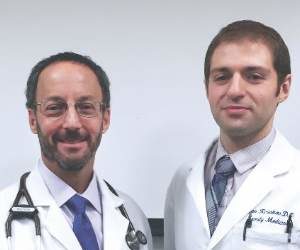FROM THE JOURNAL OF CLINICAL ONCOLOGY
Microdissected tumors from patients with lung adenocarcinoma (LADC) showed considerable heterogeneity, and in two patients both ALK fusions and EGFR mutations coexisted, researchers reported.
The study used laser-capture microdissection to isolate spatially separated tumor-cell subpopulations according to adenocarcinoma subtypes. In 20 ALK-positive patients analyzed, nine patients had tumors that harbored cells with both ALK fusions and ALK wild-type. In 20 EGFR mutated tumors analyzed, intratumoral heterogeneity was observed in five, both between different adenocarcinoma subtypes and within the same adenocarcinoma subtype (J Clin Oncol. 2015 Sep 28. doi:10.1200/jco.2014.58.8293).
“Importantly, our findings may provide a rationale for differently treating patients with LADC that harbors dual drivers. It seems reasonable to treat patients who do harbor dual drivers with two different targeted inhibitors if the oncogenic drivers of tumor cells within the same primary tumor are not all the same,” wrote Dr. Weijing Cai of Shanghai (China) Pulmonary Hospital, Tongji University, and colleagues.
The ALK fusions did not coexist with the EGFR mutations in all of the tumor cells. Researchers observed that different tumor regions had one, both, or neither mutation. In cells that had neither mutation, search for a possible third oncogene using a capture-based targeted DNA sequencing panel did not uncover another oncogenic mutation.
From 2004 to 2010, 629 patients with lung adenocarcinoma underwent surgical resection at Shanghai Pulmonary Hospital: 364 were positive for EGFR mutations and 30 for ALK fusions. In 20 ALK-positive tumors evaluated, 2 concurrently harbored ALK fusions and EGFR mutations, for a 0.3% incidence rate. Only 18.4% (116 of 629) of patients showed a single mutation pattern.
Although previous research found that intratumoral heterogeneity of EGFR mutations coincided with histologic subtypes in LADC, the current study showed that intratumoral heterogeneity exists in the same histologic subtype. Dr. Cai and associates speculated that clone evolution, not only histologic heterogeneity, may be responsible for molecular intratumoral heterogeneity.
Statistical analysis of 408 patients showed that ALK fusions were significantly more common in LADC with mucin production (P less than .001), they reported.
LADC shows high intratumoral and histologic heterogeneity, but the results of this study show that the correlation between the two has little significance for clinical diagnosis and treatment.
Dr. Cai reported having no disclosures. Several coauthors reported ties to industry sources.




